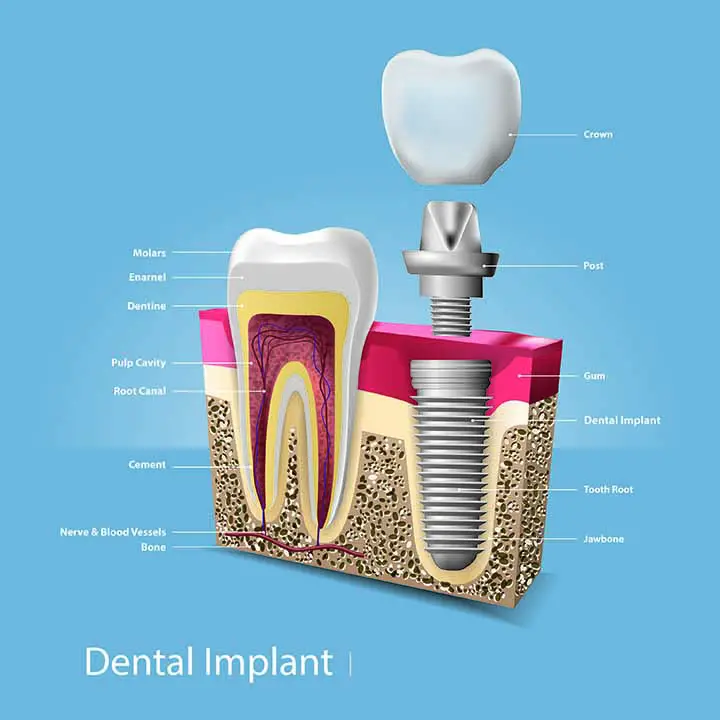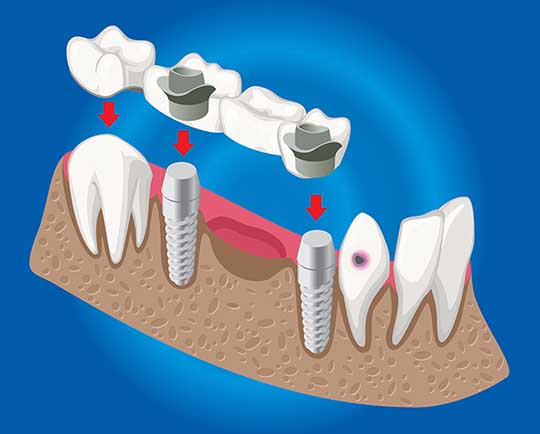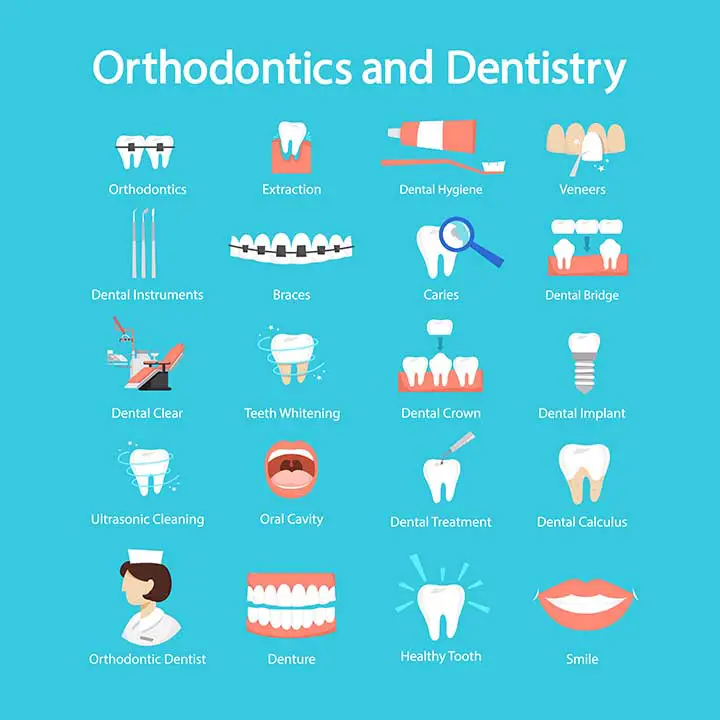Table of Contents
Dental Surgery Overview
When a dentist discusses dental surgery to a patient, they are frequently met with immediate panic and fear. The concept is that dental surgery is a stressful and costly procedure.
Many sufferers, however, are unaware that dental surgery is very common and includes procedures that treat conditions that many people have and suffer from. Each patient is unique, and each case is handled accordingly. Dental surgery is generally regarded as an outpatient procedure, and patients can usually resume daily functions within just a few days.
Dentists refer their patients to oral surgeons before deciding whether or not they are candidates for dental surgery. This is the person who will evaluate the situation and your oral health in order to determine the best plan of action. Oral surgeons may be happy to recommend nonsurgical treatments in some cases, based on the severity of your condition. Adults and children are both at risk for oral health problems, though not all surgeries are the result of oral health problems.
The most commonly used types of dental surgery are processes that many individuals do not consider dental surgery as they’re so widespread – for example, orthodonture work or teeth whitening.
The necessity of dental surgery is increasing day by day. The main reason behind this is our unhealthy food habits and lifestyle. We eat chocolates, candies, some foods that may be stuck in the gum area. Still, we forget to clean our teeth.
Common Dental Surgeries
Root Canal
Root canal surgery is widely considered to be the most common method of dental surgery. Millions of teeth are treated each year, preventing extractions and relieving pain and sensitivity. Root canals are typically painless and extremely effective at relieving pain.
A soft core called dental pulp exists beneath the enamel of a tooth and contains blood vessels, nerve endings, and tissue. When a tooth decays, bacteria enter and harm the pulp. The infected pulp causes dental pain, inflammation, and possible pain in your neck or jaw. A surgeon can treat this by trying to extract the infected pulp and removing the decayed fraction of the tooth.
Wisdom Tooth Extraction
The exclusion of four adult teeth located in the back, bottom, and top corners of your mouth is known as wisdom tooth extraction. These are the final (third) molars to emerge, which usually occurs between the ages of 17 and 25. When wisdom teeth do not have enough space to grow, they can become affected, causing pain, oral infections, and other dental issues. As a preventative measure, dentists will frequently recommend wisdom tooth removal even if impacted teeth are not an issue.
Wisdom tooth extraction is an outpatient procedure with a few days of recovery time. The wisdom teeth are extracted through surgical incisions and the extraction site is stitched closed to aid in healing. To prevent massive bleeding or blood clots, it is critical to follow your doctor’s orders regarding the healing process.
Dental Implants
Over the last 25 years, dental implants have transformed the way dentistry has evolved. An implant is a substitute for a tooth’s root or roots. They use titanium and titanium alloy to protect crowns to the jawbone. These materials are used because they are light and biocompatible – that is, they are not rejected by the body. Dental implants are used to replace teeth that have been lost due to decay, disease, oral cancer, or a variety of other factors such as smoking or alcoholism.

Dental implants are a more involved type of dental surgery because they require the bone to be effectively fused before the tooth can be attached. Implants necessitate the creation of channels in the jawbone so that the implants can be fitted with close contact with the bone. They typically require two to six months for the bone to fuse before tooth restorations (a crown or bridge) can be attached to finish the process.
Read Masseter Botox | Forehead Reduction Surgery
Reconstructive Surgery
Accidents can happen, and when there is facial injury as a result of sports injuries, falls, work-related incidents, or any other type of facial trauma, it can be frightening and painful. That is why consulting with an oral surgeon is the best option – they can provide solutions that will have you searching your best in no time! There are two categories of dental surgery for corrective surgery:
- Soft tissue injuries
- Fractures
Trauma to the skin or gums, such as cuts on the inside of the cheek, lips, or tongue, are examples of soft tissue injuries. Lacerations on the soft or hard palate are also examples of soft tissue injuries.
Accidents can happen, and when there is facial injury as a result of sports injuries, falls, work-related incidents, or any other type of facial trauma, it can be frightening and painful. That is why consulting with an oral surgeon is the best option – they can provide solutions that will have you searching your best in no time! There are two types of dental surgery for corrective surgery: soft tissue injuries and fractures.
Trauma to the skin or gums, such as cuts on the inside of the cheek, lips, or tongue, are examples of soft tissue injuries. Lacerations on the soft or hard palate are also examples of soft tissue injuries.
Fractures are related to the tiny bone tissue in your mouth and include jawbone and tooth reconstruction. If the facial injuries are severe enough, larger reconstructive surgeries are performed in the nasal cavities and the forehead. Reconstructive surgery, in some cases, used dental implants in conjunction with other methods of treatment and mechanics to repair jaw alignments and bone structure.
Read Gum Graft Surgery | Dry Socket
Cosmetic Surgery
Cosmetic dental surgery comes in a variety of forms. Cosmetic surgery is frequently used to improve a patient’s face or smile when it is not medically necessary. Cosmetic procedures include both minor treatments such as teeth whitening and major investments such as orthodonture.
Smile makeovers incorporate two or more procedures, such as teeth whitening, dental veneers, bonding, or composite restoration. Teeth whitening treatments include more than just bleaching. Bonding and veneers are also used to repair discolored or stained teeth. Some patients prefer tooth shaping to improve the physical structure of their teeth. This is accomplished by either removing tooth enamel or filing the teeth.
Cosmetic procedures are usually painless and can be performed in your dentist’s office, eliminating the need for an oral surgeon. Of course, each treatment is tailored to the individual patient.
Some Dental Surgery Procedures
Pulpotomy
This is the first step toward a root canal procedure. It entails opening the pulp chamber of the tooth in order to drain the pulp infection. To be more specific, it removed the diseased portion of the pulp while leaving the rest of the pulp alone, eliminating the need for a full-fledged root canal procedure.
This endodontic treatment is used if the patient wants to keep the remaining healthy pulpal tissue alive. Its benefits include the preservation of living teeth that can tell hot from cold temperatures and receive nutrients from your blood. A tooth that has had its root removed is more likely to crumble and break, which is why it has a crown placed on top of it.
Pulpectomy
This method involves temporarily taking away all of the pulp in the pulp chamber for relieving pain. A pulpectomy is typically used when pulpotomy is not an ideal solution and the entire pulp of the tooth has become infectious, inflamed, and disease-ridden. The canals are put on medication and cleaned after removal.
Dentists may perform pulpectomy on main or milk teeth on occasion. In these cases, the pulp is replaced with a biodegradable material. This is the recommended treatment for irreversible pulpitis of the redicular and coronal pulps, as well as primary molars that are abscessed or have radiographic evidence of furcation pathology.
Apicoectomy
Whenever the full root canal surgery (including the placement of inert material and a prosthetic crown) is insufficient to ease pain, this procedure is used. This root-end resection procedure involves surgically extracting the diseased material from the apex or end of the root through the gums.
This procedure is also referred to as a retrograde root canal treatment, root resection, and root-end filling. Its scientific term is a combination of “Apico” and “ectomy,” which refers to the removal of its very tip of the tooth root, followed by the preparation and filling of the resulting cavity with a biocompatible material. This can be accomplished through microsurgical Endodontics or dental surgery under a microscope.
Caps (crown)
We already learned a little about the placement of caps or crowns. These artificial tooth coverings are made of a variety of biocompatible materials, including a tin or gold and aluminum mixture, CMC/PMC (ceramic/porcelain metal composite), and many more. The foundational tooth must be reshaped to adjust the crown.
It is dental surgery for your teeth that makes sure you have a more durable tooth-protective cover than tooth fillings (which breaks easily, especially when dealing with the enormous biting forces of a molar). A crown could be used on a tooth that is already dead and decaying or on a tooth that needs a root canal procedure to be killed.
The Veneers
It’s like the crown, is an artificial covering, but it only covers the front surface of your tooth (in medical terms, the buccal or labial portions). They do not replace or strengthen your teeth’ ability to bite. In fact, they are primarily for aesthetic purposes.
They differ from crowns in that they are as thin as wafers and do not require as much drilling of the underlying tooth to transform it and allow it to better receive these dental prosthetics. They are also recognized as dental porcelain laminates or porcelain veneers. Shells are bonded to the front of the teeth to alter their length, size, shape, and color.
The Bridge
If a dentist extracts several teeth, leaving a wide gap between one surviving tooth and the next, a bridge can be used to bridge the gap. A bridge is a fixed row or set of prosthetic crowns. It has two or more crowns that are linked together. They substitute missing teeth by affixing them to “posts.”

The posts are the neighboring teeth that a dentist transforms to allow the crowns on both ends of the bridge to be placed. This technique of dental prosthetics is typically used after extraction to save or preserve your bite. More specifically, whenever one or more teeth are extracted, the remaining teeth gradually shift and move towards the gap. This changes your bite and even the length of your jaw.
False Teeth – Denteures
A partial or full set of false teeth, also known as dentition. They can be attached to neighboring teeth in the same way that dental bridges are. Unlike bridges, but even so, you do not need to reshape any teeth. Metal or plastic caps secure these prosthetic appliances to your teeth.
Adhesives can also be used to attach false teeth to the palatal or gingival surface. You can choose from temporary or detachable false teeth that can be placed in a glass of water before going to bed and permanent false teeth that must be inserted into your mouth, such as dental bridges.
Orthodontic Surgeries and Treatments

Implant-Supported Prosthetics
Because of their orthodontic benefits, these Prosthodontic methods can be considered orthodontic treatments in their own right. This is due to the involvement of bone, and they are used to keep your mouth shape, jaw shape, and bite shape from changing due to gaps between your remaining teeth following an extraction or several extractions.
Implants are typically used to substitute a missing tooth or teeth through surgical placement of a dental stud in the tooth socket and bone where the tooth or teeth used to be. They can also help you keep your original bite. Orthodontists can even help shape your bite and jaw for the better using the methods described above.
Fiberotomy
To avoid a dental relapse, the gum or gingival fibers around your tooth are severed during this orthodontic procedure. In this context, relapse refers to the tooth back into its original position prior to orthodontic correction. The most common post-orthodontic complication is relapse.
It is also recognized as pericision, and it prevents relapse of tooth rotations caused by dental braces, retainers, or other similar orthodontic treatments. The gingival fibers are responsible for the teeth returning to their original position after being twisted or rotated as part of your orthodontic treatment.
Periodontics
This is the branch of dentistry concerned with the treatment of gingiva (gum) or periodontal diseases such as gingivitis and periodontitis. Periodontal disease typically begins with gingivitis and gum bleeding before progressing to periodontitis.
Periodontitis complications include loose teeth and the destruction of the link between tooth, gum, and bone. Periodontal treatments frequently include dental implantation as well as laser therapy, gum graft surgery, deep cleaning, dental crown lengthening, plastic surgery, and other procedures.
Dental Surgery Summary
Many people are unwilling to undergo dental surgery, even if it is recommended by their dentist. This is due to the fact that dealing with jaw, tooth, or mouth problems is both costly and painful. They typically don’t have a choice, however, when their maxillofacial, temporomandibular, oral mucosa, gingiva, and dentition problems worsen and their pain keeps rising.

Indeed, dental surgery encompasses a wide range of dental procedures that do not necessitate going under the knife or cutting the gums. It also entails the placement of bone implants and tooth prosthetics. In any case, any type of surgery, including dental surgery, should not be taken lightly. We strongly advise using insurance to reduce the costs of such a procedure.
Last Updated on February 23, 2022 by Learn From Doctor Team





